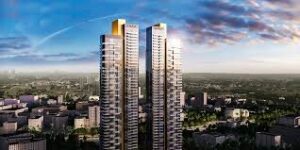
Animation is an art form that has captivated audiences for decades, bringing characters and stories to life through movement. Blender, an open-source 3D software, is one of the most popular tools for creating stunning animations, thanks to its powerful features and flexibility. Whether you are a beginner or an experienced animator, mastering Blender can significantly enhance your animation projects. In this article, we will explore some essential blender tips to help you create seamless animations that captivate and engage your audience.
1. Master the Basics of the Interface
Before diving into animation, familiarize yourself with Blender’s interface. The software has a complex and feature-rich layout, which can be overwhelming at first. Spend some time customizing the workspace to suit your needs, making use of panels like the Timeline, Graph Editor, and Dope Sheet.
Learning the basic navigation controls, such as rotating, panning, and zooming in the 3D Viewport, can save you time and make your animation process smoother. Use keyboard shortcuts to increase efficiency—for example, pressing N to bring up the properties panel, T for the tool shelf, and Spacebar to search for commands quickly.
2. Use Keyframes Efficiently
Keyframes are the foundation of animation in Blender. They allow you to define the position, rotation, scale, and other properties of an object over time. To create smooth animations, it’s crucial to set keyframes strategically. Avoid adding too many keyframes, as this can complicate your animation and make it difficult to edit later. Instead, place keyframes at critical moments, and let Blender interpolate the movement in between.
A great tip is to use the “Auto Keying” feature (N > Active Keying Set) to automatically insert keyframes for selected properties when you move or rotate objects. This can speed up your workflow significantly. Additionally, use the Graph Editor to fine-tune keyframe animations by adjusting the interpolation curves to control the speed and flow of your movements.
3. Take Advantage of Rigging Tools
For character animation, rigging is an essential step. Rigging involves creating a skeleton for your model, which allows you to manipulate it like a puppet. Blender’s Rigify add-on is a powerful tool that can simplify the rigging process. Rigify comes with pre-built rigs that you can modify to fit your character, saving you hours of manual rigging.
Another useful feature is Blender’s Inverse Kinematics (IK) solver, which helps create more natural movements, especially for arms and legs. IK allows the animator to control the position of the extremities, while the rest of the limb follows in a natural way. This method is much faster and more intuitive than using Forward Kinematics (FK), where you have to animate each joint individually.
4. Use Animation Layers
Animation layers are a fantastic way to organize and refine your animations. They allow you to work on different aspects of the animation separately without affecting other parts. For example, you can have one layer for basic movements and another for secondary actions like facial expressions or cloth simulations. Blender’s NLA (Non-Linear Animation) Editor is the tool for managing animation layers.
In the NLA Editor, you can blend, stack, and offset animation clips, which gives you more control over complex animations. This non-destructive approach allows you to experiment with different motions and effects without compromising the core animation. Using animation layers can also make it easier to fix issues or make adjustments later on.
5. Leverage the Power of Constraints
Constraints are powerful tools that allow you to control the behavior of objects in relation to other objects. They can simplify animations by automating repetitive tasks or maintaining consistent relationships between elements. For example, the “Copy Location” constraint can make an object follow another object’s position, which is particularly useful for animations like a character holding a prop.
Blender offers a variety of constraints, such as “Track To” for pointing an object towards a target, “Limit Rotation” to restrict movement, and “Child Of” to dynamically parent objects during an animation. Mastering constraints can save you a lot of time and make your animations look more realistic.
6. Fine-Tune with the Graph Editor
The Graph Editor is your best friend when it comes to polishing animations in Blender. It allows you to see and manipulate the animation curves that define the movement of your keyframes. By adjusting the handles of these curves, you can smooth out transitions, add ease-in and ease-out effects, or create more dynamic and snappy motions.
Learning to read and adjust these curves is a crucial skill for any animator. For instance, a flat curve means no motion, while a steep curve indicates rapid movement. By fine-tuning these curves, you can precisely control the timing and pacing of your animation, making it more engaging and lifelike.
7. Utilize Blender’s Animation Add-ons
Blender has a vast ecosystem of add-ons that can enhance your animation workflow. Some add-ons are built into Blender, such as the already mentioned Rigify, but others can be downloaded from external sources. Add-ons like Animation Nodes can help create complex procedural animations, while the Asset Management add-on can assist in organizing your animation assets.
Exploring these add-ons and integrating them into your workflow can unlock new possibilities and save you time. Always make sure to keep your add-ons updated to ensure compatibility with the latest version of Blender.
8. Optimize Your Scene for Better Performance
Animation can be demanding on your computer, especially with complex scenes and high-resolution models. To keep Blender running smoothly, optimize your scene by reducing the polygon count, using proxy objects for animation, or simplifying materials and lighting during the animation process.
Blender also offers a “Simplify” option in the Render settings, which allows you to lower the complexity of your scene temporarily. This can be particularly useful when working on animations with heavy simulations like hair, cloth, or fluid dynamics. Optimizing your scene will make the animation process less frustrating and more efficient.
9. Use Motion Paths for Better Visualization
Motion Paths are a helpful tool in Blender that allows you to visualize the trajectory of an animated object or bone. By displaying a path that shows the movement over time, you can easily spot and correct issues such as jittery movements, uneven spacing, or unrealistic paths.
To use Motion Paths, select the object or bone, and then in the “Object Data Properties” panel, you can calculate and display the motion path. This visual feedback is invaluable for making sure your animations look smooth and realistic.
10. Render with the Right Settings
Rendering is the final step of your animation process, and using the correct settings can make a significant difference in the quality and efficiency of your output. Blender’s rendering engine, Cycles, provides high-quality results, but it can be slow. Consider using Eevee for quicker renders if you don’t need the advanced lighting features of Cycles.
Set your render resolution, frame rate, and file format in the Output Properties panel. For animations, rendering to an image sequence (like PNG or EXR) is recommended over video formats, as it allows for easier corrections and compositing in post-production. Don’t forget to enable denoising options if rendering with Cycles to reduce noise without increasing render times significantly.
Conclusion
Mastering animation in Blender requires patience, practice, and a willingness to learn and experiment. By implementing these Blender tips, you can streamline your workflow, create more realistic animations, and enhance the overall quality of your projects. Remember that animation is as much about storytelling as it is about technical skills, so keep experimenting with new techniques and pushing the boundaries of what you can create with Blender. Happy animating!



